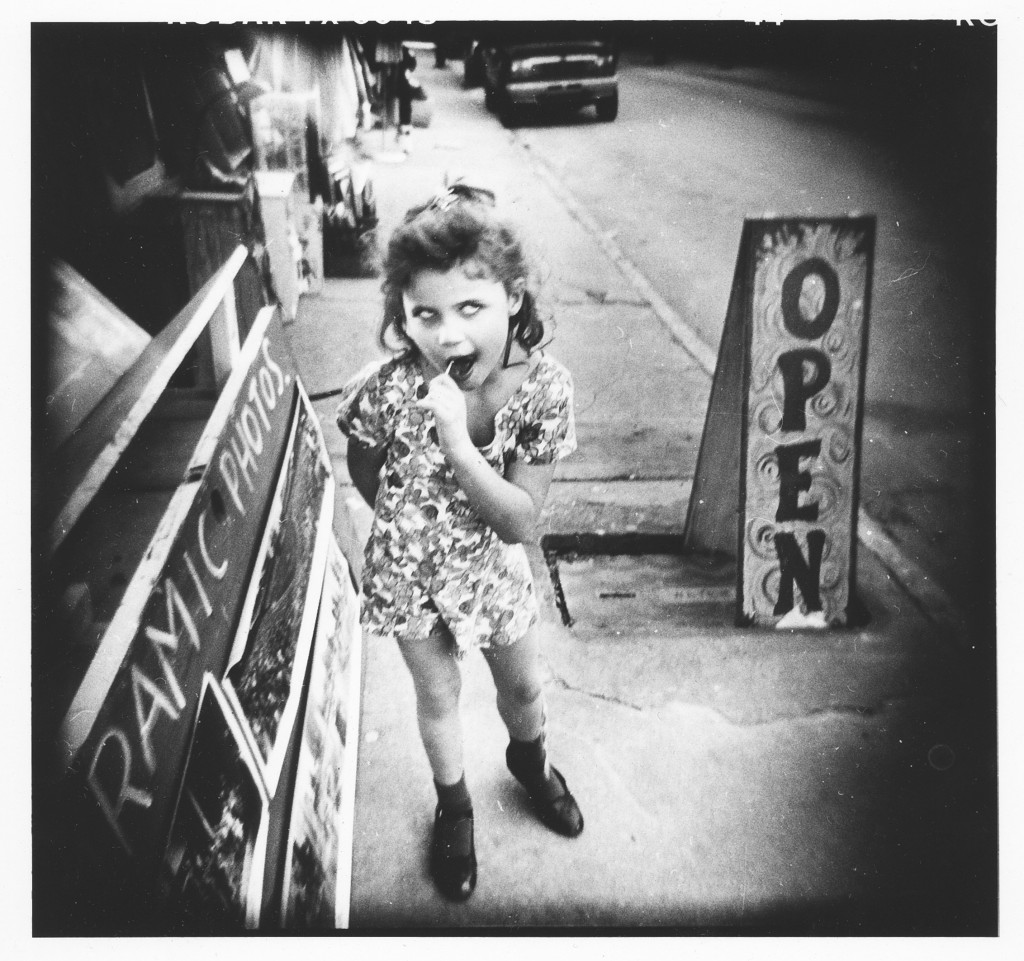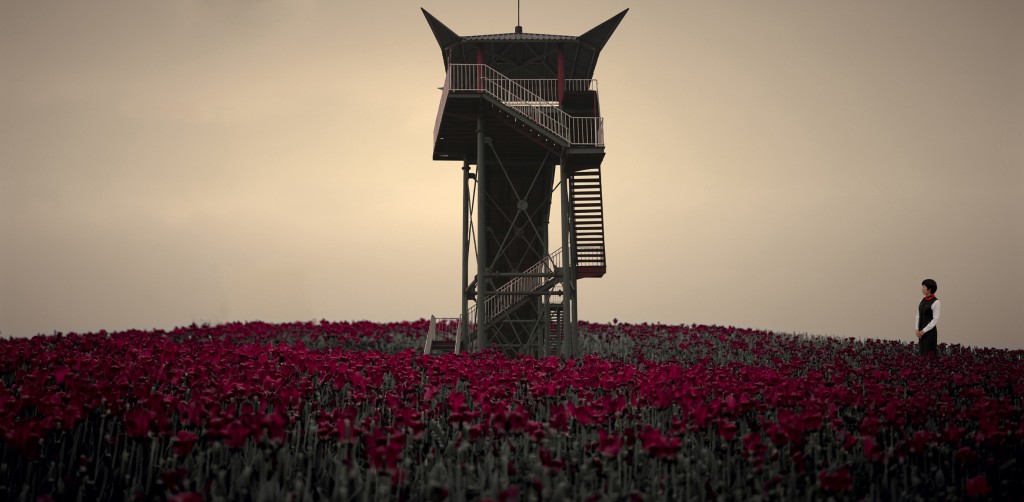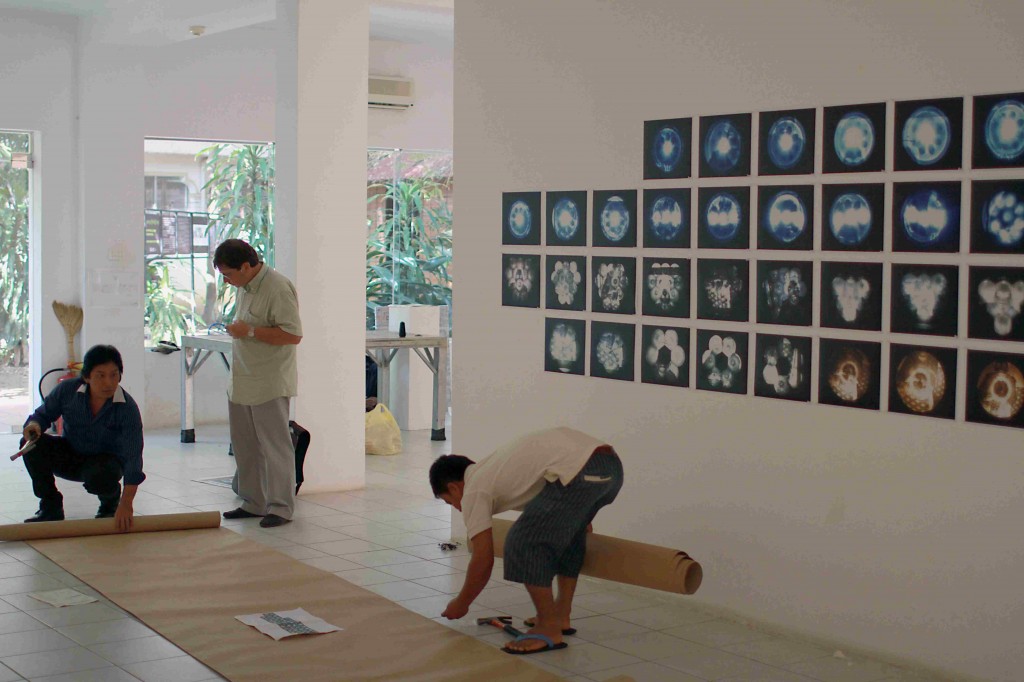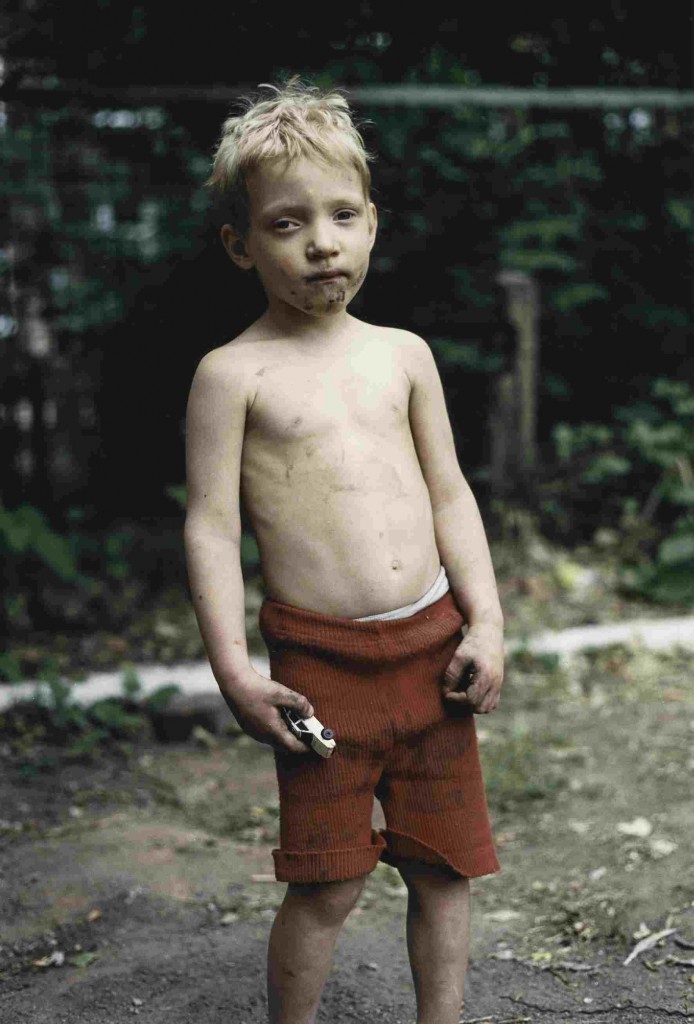Interviewed by Manik Katyal: Emaho Magazine
Emaho caught up with celebrated French curator and photographer Christian Caujolle to see the view from his rarefied space.
Manik: It?s been more than 26 years roughly that you have started your career as a photo editor with Liberation and then you started curating; how has the journey and experience been so far?
Christian: I think that the first thing is that for different reasons the environment of photography and then the content?the aesthetics of photography radically changed. Let?s say that there are two main points which made those changes radical. One is the crisis of media business in printed paper and the second one is the invention of technology with the invention of development and coming of digital image. So the result in one way is a fact that the traditional media are in economic trouble but also may be conceptual trouble. As a consequence on what was the main or more visible area of photography from the 50s-80s, which was information, information with mostly photojournalism and part of documentary. That doesn?t means that photojournalism died, that means it?s no more at its top; that means that documentary photography, I will say in tradition which is an old tradition including from the beginning of 20th century when someone as Sander became more important than before in and after? there are big changes in the perception of photography with the development of the functionality of books, the exhibitions.
So the real perception of the cultural and artistic dimension of photography and as consequence the development of an art market for photography?I think we have to be conscious about another thing with digital and with development of digital by the industry something happened which is the end of a golden period for photography that doesn?t mean it died. But I think photography built as a memory of 20th century and globally is the most important and complex visual means of expression of the 20th century that absolutely finished; whereas in another world, which is a world of imagery? and photography is a part of that world of imagery. Photography can no more be arrogant except probably because of very complex and problematic systems in there? on the market some part of photography is arrogant? on the art market? but let?s say that the main function of photography with very different kinds of aesthetics which was building memory of 20th century, that?s finished.
I have no idea about what would be the visualised memory of the first part of 21st century; I have no idea at all about what would be the family album of kids who are 10yrs old today so that is serious change. For us there is something else? which for me makes including more importance of fact of showing photography, what changed which is also positive that today more and more people can produce images and share, send or make them travel very quickly, speed is one of the main value of today?s society? I think its a very dangerous value.

M: Why do you say dangerous?
C: Because I think if we don?t take time for thinking we are losing something and I have many times a feeling that the machines go much faster than human brain which makes quite strange consequences if you look on economy? when you have computers who sell and buy in micro seconds to make profit? that?s totally amazing you know? and corresponds to no touchable or physical reality of goods and products, but has a lot of consequences for the individual and collective situation of people in developing and developed countries. I think that it?s a good thing that more and more people can produce images.
M: Because it?s easy?
C: Yes, because producing images at times was reserved to elites, today it?s more democratic but that?s not democratisation because us? no one teaches and our schools and universities are not permitting the people to read and to understand those images? every thing becomes a kind of big mass of images all around people we are living in a super market or hyper market of streams. We have left of what?s the real world and that?s the reason why I think its more and more important to show? to exhibit? to publish photographic works? works by photographers; because people are not stupid you know, people see the difference between what they produce as images and what photographers produce. If you go to the cases of what the people will see? the works by Isabel Mu?oz they are familiar with ballet Cambodian ballet in a restaurant where you have traditional dancing they? with iPhones they image it, but when they see the photographic work by Isabel, brilliant standard, they feel and see that that it is some thing different? so for me that?s very important you know. Its part of an educational purpose? non formal? it?s not the university but its something else, which is for me necessary. When I began to write about photography in 1979 the only place for photography was one gallery which opened in 1975 there was only one photo gallery in Paris, today you have?
M: Thousands?
C: Thousands! And institutions! You have Maison de Reve, National Center for Photography, you have big events, and you have people queuing at NCP to see works of others, that?s a big change.
M: So in a way it has evolved for something very convenient and very good but also the boom of photography has played a very important role in changing perception of photography? right?
C: Absolutely, yes.

M: And one question I wanted to ask you? that when you entered the world of curating, you completely left photojournalism? why?
C: It was quite personal, but from inside not so many changes. So when I was working as a picture editor I wasn?t limited to photojournalism? one of the things which Liberation changed in the world of printed media & information was the fact that we were able to publish at the same time in the same issue photos by AP and by Duane Michals and you know? set of photographs and pure document about news and my ideas has always been the only important thing is what kind of meaning you give to things. Photography is something very fragile? photography is totally own crisis the precession from the context where you put it from the text or the captions or titles. So I continued in the same direction I feel, but probably accompanying new aesthetics new proposals coming from the superpowers? you know I am not an artist? I am just kind of a tool in between.
M: To connect? But you are playing the most important role?
C: No, no, because without the artist you do nothing?
M: That is true? that is completely true
C: You know that the most important thing is? obviously not only in photography and one of the big questions of today is for me? is what could be or what is the function of the artist you know? painters, musicians, moviemakers. I don?t care, you know, but does that make sense for the artist kind of society we live in and what kind of artist only business or some other kind of challenges? And artist dealing with society lives in?? And I have always been interested by that? and in Liberation, what I found, I have to say that it was in 1981 when I began as a picture editor. I was disgusted by the bad aesthetic quality of the photos of France press? and I found them totally boring? we tried to give the readers a visual perspectives, emotions, surprises, to build visual narrative which you had to reinvent everyday. It?s exhausting but you can make mistakes you learn after you do another one?
M: So from there you entered the world of curating which was very natural to you?it grew over the period of time?
C: Ya? it was learning you know, it?s another process of editing. At first I thought it was for the wall but I was wrong. When you create an exhibition, it?s for the space not for the wall. It?s a question of space, not a question of? because many times people think curating an exhibition has something to do with the narrative on the wall? I think that?s a totally wrong position. The main thing is that you are entering the space where its in a volume? its not on a frat you know so, it takes some time to learn it to try to understand it and there?s no rule. If you try to go with rules, rules always don?t work and it becomes quite artificial so I still learn, you know, that?s the reason why I love going to the exhibitions, to the river side, to the walls of the French embassy to see how people look…
M: How people react?
C: Ya? how they physically turn around and say I will not adopt and not stop in front of the French embassy? and why he stops in front of that image and stays? what?s happening in his mind you know? that?s a mystery?
M: You also mentioned yesterday at Michael Ackerman?s talk about the small girl who was trying to make a small dancing pose when she saw that exhibition on the riverside?
C: Ya? it?s fantastic you know? its kind of reaction, of people trying to compare the moment when the little girl was looking at the arm and looking at the photo of Isabel? for me that was magic because she was just five years old you know? but without any kind of intellectualisation, she was making the difference between reality and an image, which is absolutely necessary and that was magic? it was beautiful and her mother with a phone was taking photos? you know for me that makes sense
M: So basically Christian Caujolle loves the reaction of the audience in terms of his curating of work…
C: Ya? absolutely! Because I hope to see, how they react because I try to do my best but I am never sure, I can make mistakes I make mistakes. In 2008, we stuck the big enormous eyes of an African woman in the walls of French Embassy, some Cambodian were afraid because they thought that it was manifestation of the spirits?

M: Oh no! Ok!
C: And I know the country ?I know there is fear of spirits, probably I don?t know if you were there when we were at the small square of the church?
M: Ya ?I was there, I was a little late?
C: At one moment when Remonde puts the big mask from Angkor on the tree, a small girl totally became afraid and crying and dispirited and her father had to take her on the back you know?
M: Oh no, ya I understand
C: Sometimes it looks like it?s a mistake and sometimes it?s not a mistake because it doesn?t mean that I don?t have to do it?
M: But you learn from your mistakes?
C: Ya totally its how you want to learn, you know?
M: So we come to another question. It?s been so long for you? where you have been dealing with photography almost all through your life, so how has been that evolution in you as a person in terms of dealing with photography in two different eras?
C: The evolution is probably being more conscious?and at the beginning about the difference between reality and an image of reality? and being able to better manage that concept in the youth of the photograph? that?s probably the main evolution?
M: You just mentioned that in 1975 there was just one gallery in Paris and that is where you were studying photography and in 1981 you joined as a picture editor, so tell us about the time where there were just limited agencies in Paris like Sigma and Gamma? when was Agence Vu born?
C: See in 1986? when we created Vu it was very strange because the project was to produce images for the project of a weekly of Liberation which at the end was cancelled. But we had begun the agency? so I created the agency as a tool for both things, for producing and reselling for Liberation and to organise the diffusion of the photographs of the young photographers that I was working with Liberation ?I have worked with for the last five years the only thing was a concept was to name it Vu as the weekly of the twenties in France where Man Ray, Brassai and Kert?sz were working? second thing was to call it photographers agency and not photo agency. Magnum was Magnum Photos, and to have a wide angle from photojournalism to set up photographs and to have very different aesthetics and, Magnum, I respect them and friends, people may not accept with time was a real Leica-ist group? you know it was just Leica and so, it was not our concern?
M: So how was Agence Vu different from others? You know? you have also mentioned in the past that when you were a photo editor? for you it was really difficult to look for images? you know from different agencies like Sigma, Gamma?
C: Yea, we had no money to buy from the big agencies
M: So how was Agence Vu different from other agencies during those times?
C: We were working less on art notes and working more on documentary and trying more to produce like everyone was trying to co-produce with a different media in the world you know?plus supporting the personal project of photographers who had not made it with commercial possibilities that was one of the strong things?
M: Is that why you think it was very different from other agency during those times??
C: At that moment Magnum wasn?t doing cultural projects and exhibitions and Gamma Sigma were all news and I think the main thing was that the photographers individually aimed very different one from the other one? what would easily hurt the agency that?s the main thing you know?
M: Can you share one of your fond memories with the older generation of Magnum photographers??
C: Gilles Peress is still quite close friend and when Michelle died he was a close friend, Gilles was in Paris and I asked Gilles? and I spend one night drinking and I was just belated and I asked Gilles to shoot at the funeral and? for example? or working with Salgado and Cartier Bresson? you know I have a lot of fond memories?
M: That?s great! So tell us more about the festival photo Phnom Penh and what has been the response for this year?s festival?
C: The response is very strong this year I am very? very happy this year as more and more Cambodian people are joining the events? you could see yesterday night?
M: Yea? a lot of kids and students..
C: Ya? a lot of students including? its difficult for them, as normally at six pm it becomes night? they go back home and the families push? so they are brave? you know for what they are doing?but its one of the problems for the night screenings?

M: Time restrictions?
C: But I am happy with the result of the image? its not as good but the structure?
M: What does Photo Phnom Penh mean to you?
C: For me probably in my activities, the one I?m more dedicated today with probably more enormous number of products… but I think makes really sense? it was a big change from 2008 till today in the eyes of the young people? and the response of the public? and when you see things go on and the desire of the people it makes sense you know?
M: You have a project called ?straight from the heart? in the Photo Phnom Penh. Can you just tell us something about it?
C: For me organising? it?s a thing? a presence of art in a pubic place? is what makes more sense when you choose. I will say the result is or? what I couldn?t see the real art is was a problem complained in the authorisations? its really complicated? it?s heavy. So I hope to have more authorisations to have more things outside?
M: As a curator do you prefer an open public space as compared to closed spaces?
C: Especially in Cambodia. Already in Paris a large of percentage of people will push for the door of a gallery or a museum. You can?t imagine that in Cambodia where generations have had no education. If, lets imagine, that say a museum for contemporary art from Cambodia? how many people would go in if its door was not on the street? So if you want to touch the public you have to go to it? and that?s the reason why its so important to have the exhibitions at a university? that was a fight of two years you know before getting the authorisation because the director wasn?t convinced
M: So with this festival, you also have an aim to reach out to more public and educate them with the world photography?
C: Absolutely! You know? for me the function of a festival is to educate? surprise the people and permit meetings and discussion between the people. If not that, then what else would it mean?
M: Christian, you have curated a lot of photographers from Asia. What reasons would you give for the growth of Asian photography in the past decade?
C: Haha! Oh well, that?s long. Complicated?
M: Just a small brief?
C: It?s complicated because the situation varies depending in different countries including you look at the five countries? the situation in Laos was quite poor? in Thailand there?s a balance between artistic and totally commercial? in Cambodia today there is this strong thing about expression but they also have to make their living?
M: What about Japan, China, India and Bangladesh??
C: Well, Japan is the oldest tradition with very specific thing that is tradition? the tradition of the book? this mainly it begins to develop a market for the print with very few collectors?
M: Daido Moriyama, Nobuyushi Araki, these guys have produced 450 photo books in their times?
C: Yes but they sold prints outside Japan and not in Japan?
M: That?s really shocking?
C: China is very complicated because we are in the problem of speculative market and for me there are two kinds of photographers in China I am interested? by, on one way the performers like Li Wei for me is the main example and the documentary ones which are very interesting and there?s lots. Bangladesh is such a beautiful example probably one of the strongest countries in the world about documentary photography? Sahidul-Alam we know that?s amazing. India is difficult; India has a lot of interesting photographers but its difficult to find them but, by chance? I have friends who send me links and emails. Because as there is no festival? as there is no structure I would say, the country is enormous of course its not easy to know exactly the scene in India? but its a rule I?ve kept from the beginning of the festival to have one Chinese and one Indian photographer?
M: So who is exhibiting this time?
C: From China it?s a first time exhibitor? it?s a very special work by Wang Lin with photo montages, personal stories, she was an air hostess she was fired and she has done a series of photo montage? which I love? it?s a desperate dream of those women who have no more work and from India its Mahesh Shantaram. I?ve known his work for a long time I was waiting until the moment he has included the people on the series I knew that he wanted? and I thought it was making some sense towards both aspects

M: The wedding series?
C: Yea, not only the empty spaces and that?s the reason why?
M: Could you share your current projects that you are working on these days??
C: Working with a small?I continue to write, I am teaching in France, some workshops in different countries, I am curating a small festival in Spain for the next three years? outside everything is outside? and working on 2-3 projects of quite complicated exhibitions which will take time and I would like have some more time to go back to writing?
M: Your passion for writing still exists?
C: Ya, you know I am a writer, I come from writing?
M: So let?s have one word to describe your love for photography?
C: The fact that after 30 years, photography has continued to astonish me.
M: Astonishment?
C: Yes.

M: One question I have been always wanted to ask you: why do you think it is important to have two festivals in a country like Cambodia like Angkor and then Photo Phnom Penh?
C: The question of having two festivals? it?s not my decision. Angkor was existing… Angkor is mostly based on the workshops. I was asked by the French cultural centre to organise a festival in Phnom Penh? I thought it was making sense because its the capital; because if you want to touch the Cambodian people, it?s Phnom Penh. Plus you have students and new generations. After all, we are not at competition? the reason that I don?t organise workshops is because my project is based on mostly on the exhibitions on the public space developing those public spaces, and we organise things not to be at the same period of dates? so that?s it. After I think both can make sense, my main concern is the Cambodian public and that is the reason why, the persons employed everywhere are Cambodian? and for all the exhibition and all the communication?
M: Do we expect some sort of a collaboration in future between the two festivals?
C: I have to say two things about the future, first for the future of Photo Phnom Penh? I don?t know today because of the problems for budget? I don?t know what?s going to happen? the second thing is that I will not organise workshops if Angkor continues. But if I organise the workshops, I will organise the workshops in Phnom Penh to give the opportunity also to the students from the department of communication of the university to join the workshop and? because you know they live in Phnom Penh so they don?t have to pay for travel. That?s the reality and I will probably try to make do with the photographers who are coming for the exhibitions? but that?s not the project for the moment, you know for me there?s no contradiction between both. But for me it?s very important to do it in Phnom Penh if I can? if we have the money?

M: One last question?who?s your favourite photographer? who you?ve always wanted to curate?
C: I cannot say because I have had the chance of curating Robert Frank, I?ve done Christian common,
M: But if you had the chance?
C: If I had the chance?probably people from the 20s-30s, people from the period of the avant garde, but I wasn?t born then?
M: Haha!





Leave a Reply
You must be logged in to post a comment.